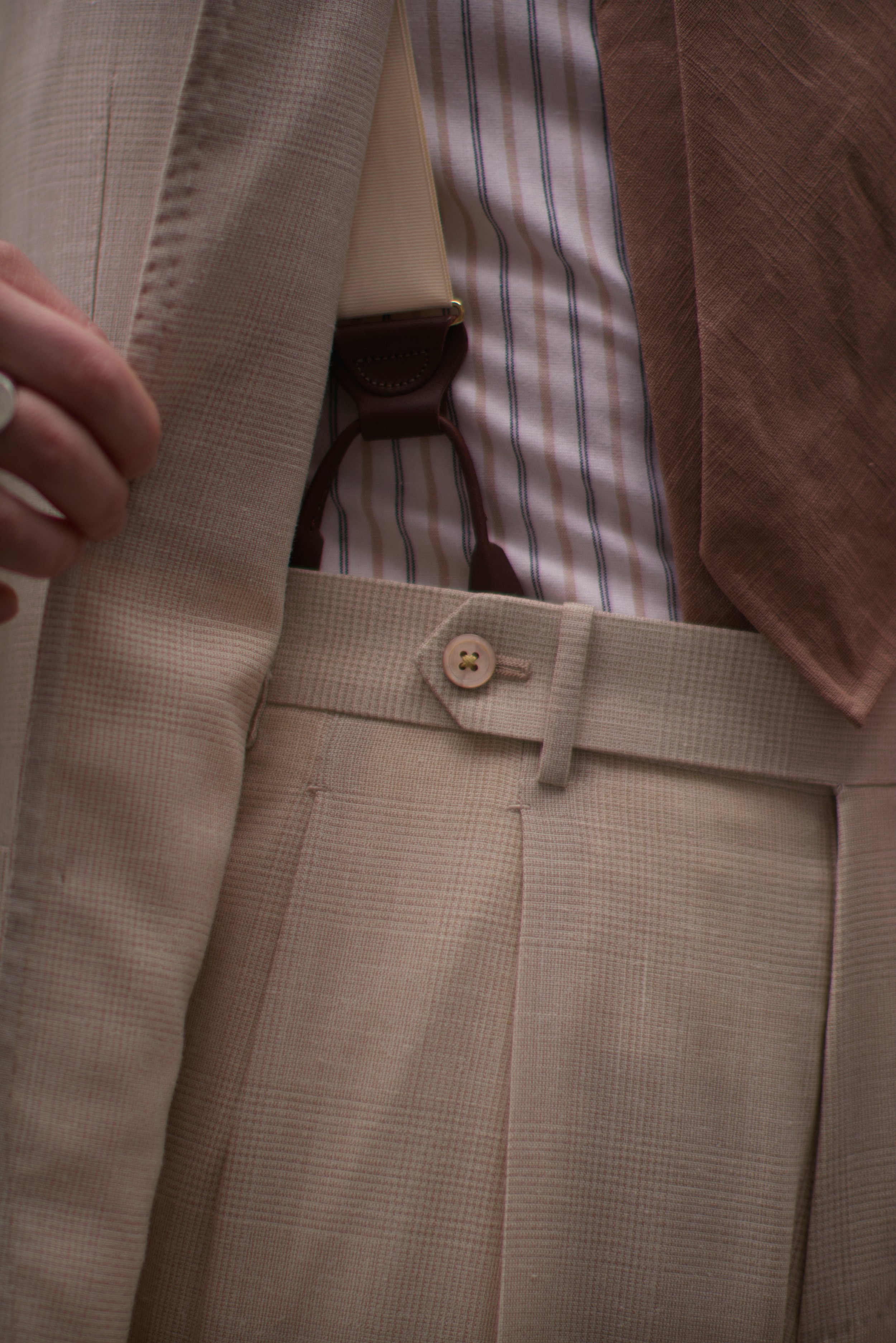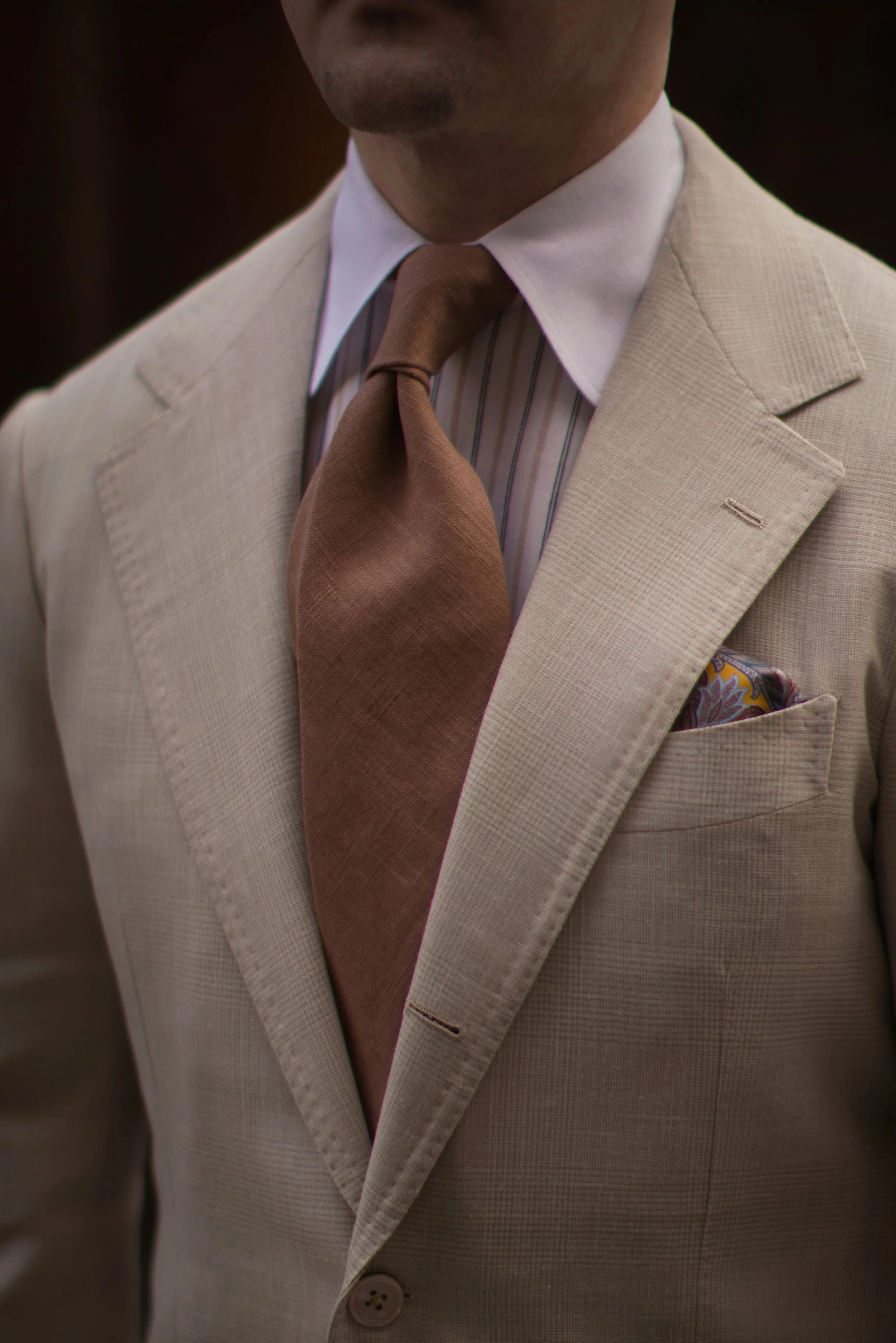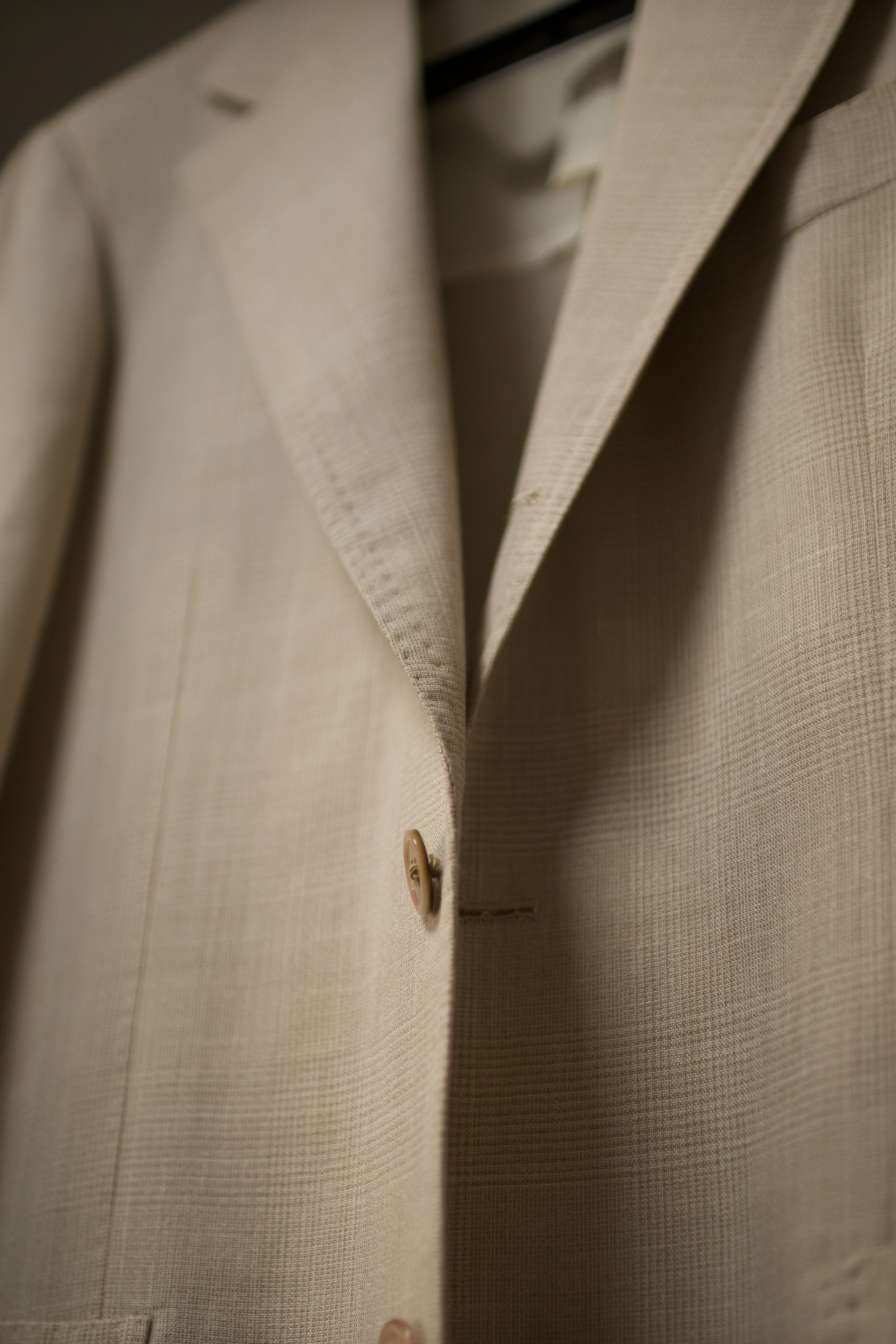
Ermenegildo Zegna
Cross-Ply
Ring Jacket
It seems like every time I dip my toes into something Zegna, a new palette emerges and this is no exception. My venture with Zegna’s Bielmonte a year or two back was a step towards breaking away from the darker tones I usually wear, this one takes it all the way to the end of that scale.
Cloth Properties
Ermenegildo Zegna
→ Cross-Ply
71% Wool / 15% Silk / 14% Linen
260g
Plain Weave
I’ve stated time and time again “weave over weight” as a slogan, promoting high-twists and open plain weaves as the quintessential summer fabrics.
Although the slogan is still true, it doesn’t mean that weight doesn’t matter - that was never what I tried to convey, which comes to show with this fabric.
Zegna’s cross-ply fabrics are as far as my impression goes a conventional summer fabric in the sense that I see sport coats with different qualities from their line being sold every year, similar to Loro Piana’s Summertime.
Despite comprising thinner threads and a tighter weave, it’s still quite open and combined with the lower weight it’s a ridiculously comfortable fabric to wear. The benefit of the high-twists I own is that there’s great airflow, but averaging around 300g once you are caught in the sun for longer periods of time the weight eventually will catch up with you. With a quality such as this cross-ply that is not an issue and what it lacks in openness (compared to a conventional high-twist) it makes up for in weight. Granted, the colour of this fabric obviously also is a huge benefit.
My first impression was that I’m glad it’s not lighter than 260g because although it does have some drape, any lighter would most likely not and make it way too susceptible to wrinkling.
That said, cross-ply fabrics are durable and flexible.
For someone who’s used to the feel of high-twists, the lightness of a 260g cross-ply suit makes it seem somewhat frail the first few wears, but that isn’t the case at all, it’s simply just a very light fabric.
Cloth Look
The main act in this play is undoubtedly the look of this fabric. We’ll get to the part about how stunning it is soon, but as mentioned earlier, I thought the Bielmonte fabric would be about as bright as I could comfortably go, but this takes it to a whole new level.
You might wonder what all the fuzz is about, it’s not like it’s the first off-white suit ever made after all. My aversion to lighter fabrics, in terms of colour, has never been about style and I’ve wanted to venture into lighter palettes since I first put on a suit. It’s simply the anxiety associated with wearing one when I’m out and about. I trust my own ability to some extent, but I can’t say I have the same trust in the people around me.
So, to the actual look. The fabric has a cream base with a light beige glen check. When I first saw it in pictures I had a hunch it might be something to check out, but I can’t emphasise how little the pictures did this fabric justice.
It’s absolutely stunning. The check is subtle enough to preserve a soothing impression and the fabric is perceived almost as a solid from a far. Once you get up close though, the check pattern really stands out in terms of its subtle beauty (not boldness). Although, not a part of the fabric, I’m also incredibly satisfied with the choice of buttons. The mother of pearl buttons really becomes an essential part of the look and feel this suit asserts.
Suit
You might be surprised about my sudden return to the ready to wear selection, after all, I’ve mentioned that the rise of the RTW trousers aren’t quite to my liking. This is still true, but there are a couple of factors that eventually lead me here.
The first one is, I know I’m gonna wear this jacket as a sport coat more than I will wear it as a full suit. I’m close to admitting I would possibly have wanted this just for the jacket even. Thus, I could live with the shorter rise for the times the trousers will be worn.
Closing in on the decision, it happens that my shoulders and back has grown enough for me to comfortably, perhaps ideally, wear jackets one size bigger than what I have been. Which means the trousers will also have a slightly higher rise.
Lastly, after doing some research, I found that altering the crotch area by sewing it lower will (obviously) lengthen the rise.
And so, that’s what we did.
I’ll write about this specifically in another post, but just for the record, we tried this method on some of my other trousers (that I have two of) to see the results and it actually worked quite well. It means a fuller cut on the upper part of the trousers which I would say is desirable for summer, but still a similarly tapered silhouette as I’m used to.
There isn’t a whole lot more that changes in terms of the suit specs as far as going for an RTW suit goes, in fact the rise is the only significant change I have made. But, going up one size means wider lapels and needless to say that’s a pleasant feature.
The lapels on my jackets are usually around 9 to 9,5cm so it’s not like they were narrow by any measure, but getting closer to 10cm gives it a little extra pizzazz. You know, turning it up to 11 as a they say.
Specs
Jacket No-286
Unlined
3-Roll-2
Double Stitching
Patch Pockets
9,9cm Lapels
Working Buttons
Trouser S-178
Two Pleats / Out Pleats
Side Adjusters
Rise 27cm
5 cm Turn-ups













